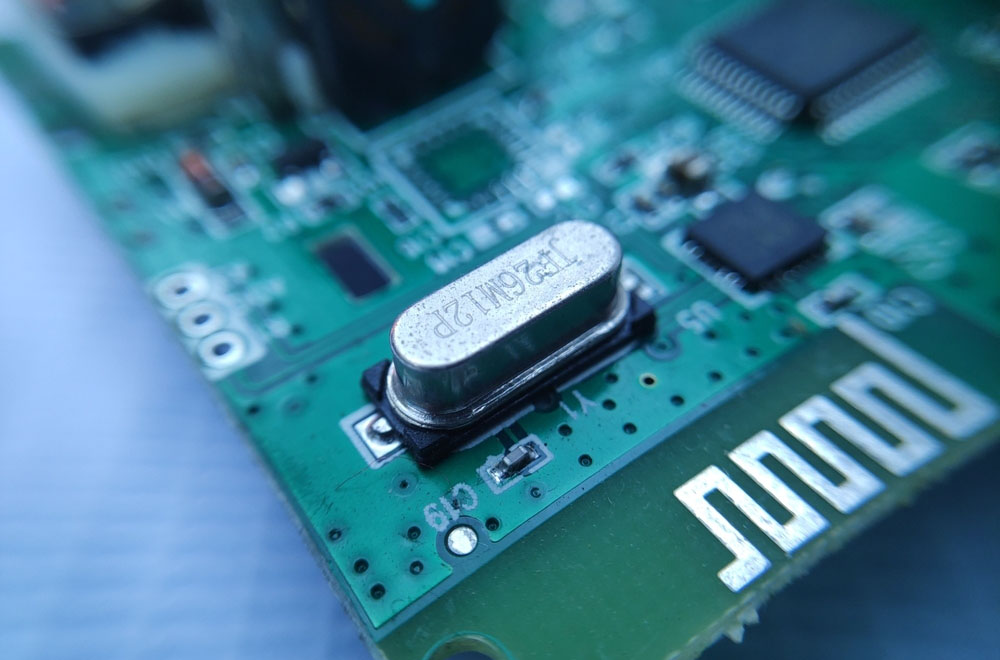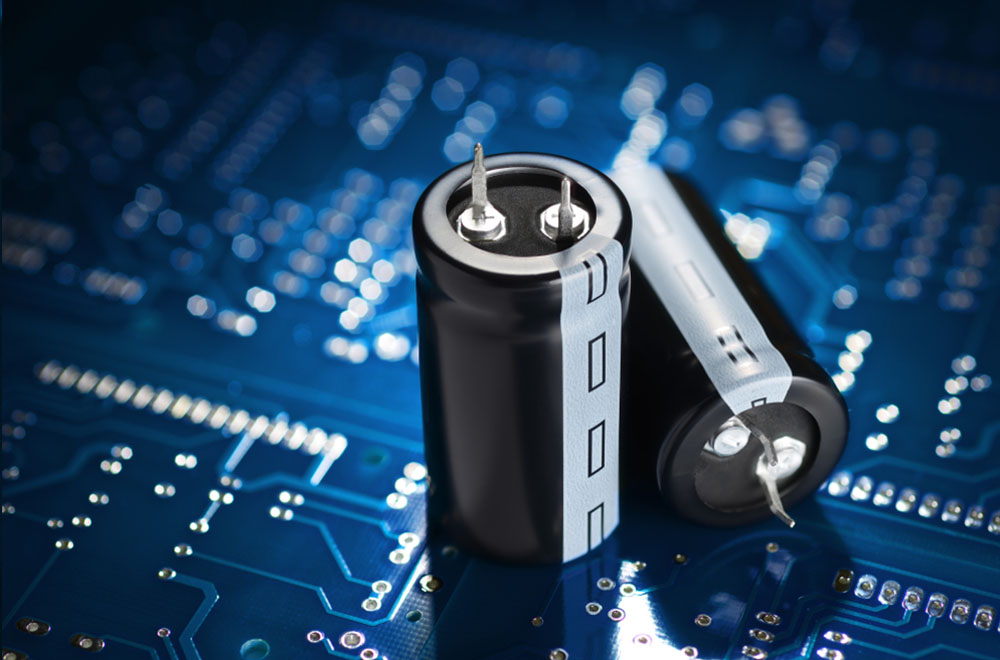2023-09-08
Load Capacitance: The Key to Precision in Crystal Units

Load capacitance, often termed CL, is key in the functionality and precision of quartz crystal units in electronics. It serves as a determining factor for a crystal oscillation circuit's load resonant frequency (LRF), and it is intricately tied to the specific circuit design. In fact, the value of CL, which includes the Cg/Cd capacitance value plus any parasitic capacitance, directly affects the speed and accuracy of these units. Just a slight variation in circuit design can cause substantial frequency errors, emphasizing the need for precise control and understanding of load capacitance in the design process.
Siward, with its expertise in manufacturing high-precision crystal units and oscillators, recognizes the critical importance of load capacitance in circuit design. The company strives to make sure its frequency products work properly on the customer's circuit design, and match this specification as closely as possible, utilizing its proprietary technology and deep understanding of the science behind load capacitance. This commitment to aligning with specific circuit design requirements demonstrates Siward's pursuit of excellence in delivering superior frequency control products.
Understanding Load Capacitance
Load capacitance in an oscillation circuit refers to the combined capacitive effect of input and output capacitance and any stray capacitance in the circuit. It affects the resonant frequency and determines the oscillation's stability and phase noise. Particularly in crystal circuits like the Pierce oscillator, the value of the load capacitance must be accurately matched with the crystal's specified load capacitance. A mismatch can result in an inaccurate oscillation, a change in the resonant frequency, or even failure to oscillate.
In the context of quartz crystals used in Pierce oscillator circuits, the load capacitance, often termed CL, is intimately tied to the crystal's resonant frequency and, therefore, its precision. A change in load capacitance will cause a parallel resonance shift, affecting the oscillation circuit's accuracy. This specific value is vital in the functionality of the crystal and a deviation from it can lead to frequency errors in parts per million (ppm). Precise tuning and matching the load capacitance with the crystal's specifications are essential to ensuring the oscillation circuit's proper functioning and high precision.
Debunking Misconceptions about Crystal Load Capacitance
In the field of electronics, understanding load capacitance in quartz crystals is vital. Misunderstandings can lead to significant problems in circuit design. Here, we address two common misconceptions:
- Misconception#1—Matching Load Capacitance with External Capacitors: A prevailing belief is that if the crystal load capacitance is specified at 20 pF, both external capacitors should also be rated at 20 pF each.
- Misconception#2—Sum of External Capacitors Equals Load Capacitance: Another incorrect assumption is that the sum of the values of the two external capacitors should equal the crystal load capacitance. This view disregards the influence of stray and input/output capacitances, which play a significant role in determining the effective load capacitance.
Adherence to these misconceptions can lead to substantial issues in circuit design. Selecting capacitors based solely on the crystal's datasheet, without considering all contributing factors, may cause unexpected frequency shifts, impacting the precision and functionality of the circuit. While an incorrect load capacitance value might not immediately result in failure, it may, over time, cause unstable behavior, interference, and other unforeseen problems, undermining the overall performance and reliability of the system.
How to Choose the Right Capacitors for Your Circuit?

First, a correct understanding of load capacitance's role and considering all capacitance contributions are needed for the accuracy and robustness of the oscillation circuit. It includes factors like stray capacitance and the input and output capacitance of the microcontroller.
Now, the main issue is that you can't find the stray capacitance without a real circuit. In the PCB Design, you must estimate the stray capacitance first. Then, you can test it with the final circuit to see if the frequency is acceptable. Note that the stray capacitance in a Pierce oscillator circuit usually ranges from 3 pF to 7 pF. Using this information, you can quickly determine the values for the two external capacitors, Cg and Cd, using the following formula.
CL = (Cg*Cd)/(Cg+Cd) + Cstray
The Impact of Load Capacitance on Frequency
The crystal's resonant frequency mainly sets the oscillator's frequency. This number comes from the manufacturer of the crystal. Keep in mind that the resonant frequency is where the crystal's reactance is zero and impedance is highest. Yet, the actual frequency might differ a little from this. It is because of the inverter's parasitic capacitance and load capacitance. Load capacitance is the combined capacitance of the crystal seen at the inverter's input and output. You can change it by putting external capacitors parallel to the crystal. Load capacitance affects the crystal oscillation circuit's phase shift and loop gain. Higher load capacitance raises the phase shift but cuts the loop gain. Lower does the opposite. Accordingly, there exists the optimal amount of load capacitance, which makes the oscillation work right and keeps the frequency error small. You can figure out the optimal crystal load capacitance using the formula given by the manufacturer. You can also use an online tool or a simulation.
Measuring the Frequency of Your Actual Circuit
A recommendation is that you should choose similar values for Cg and Cd or at least keep them close. It stops sudden changes in frequency and other disruptions or interferences. On the other hand, if Cg and Cd aren't equal, make Cg smaller than Cd. Still, measuring the actual circuit frequency is crucial. Because you can only guess the stray capacitance, you need to confirm if the frequency meets the needed accuracy for your use.
Siward's Expertise in Crystal Units and Oscillators
Drawing from an impressive legacy of experience and innovation, Siward manufactures high-quality crystal units and oscillators, including the XO (crystal oscillator), TCXO (temperature-compensated crystal oscillator), and VCXO (voltage-controlled crystal oscillator) series. Our products showcase a fine blend of advanced engineering and technical precision.
In the crystal units category, in addition to these offerings, Siward also produces the 32.768 kHz Tuning Fork Crystal Units, which are known for their high stability and low power consumption, making them essential and suitable for a wide range of timing applications. Another innovative product in our lineup is the Crystal Units with Built-in Temperature Sensor (MHz), which combines precise frequency control with temperature sensing capabilities, providing a unique solution for various industrial and technological needs.
Our oscillators offer several nominal frequencies, from as low as 0.5MHz to as high as 200MHz, with temperature ranges extending from -40℃ to +125℃. It caters to diverse demands across various sectors, including 5G network infrastructure, data centers, servers, automotive, and aerospace.
Siward's commitment to quality assurance and industry standards is evident in its product development process. Each oscillator undergoes rigorous testing for frequency stability, which is maintained within ±25 ppm to ±50 ppm for optimal reliability. Moreover, the output waveforms of our products are either C-MOS, LVPECL, LVDS, or HCSL while adhering to industry-specific requirements. The supply voltages span 1.8, 2.5, and 3.3, which further evidences our adaptability to various applications. All these parameters underscore Siward's unwavering dedication to delivering superior and reliable performance in products.
Whether you are a seasoned electronics engineer or a curious enthusiast, grasping the intricacies of load capacitance is imperative for successful circuit design. And with Siward's extensive offerings of high-quality crystal units and oscillators, the pursuit of accuracy, reliability, and excellence becomes a shared endeavor. Explore Siward's comprehensive range today, and discover the perfect solution that resonates with your unique requirements!
